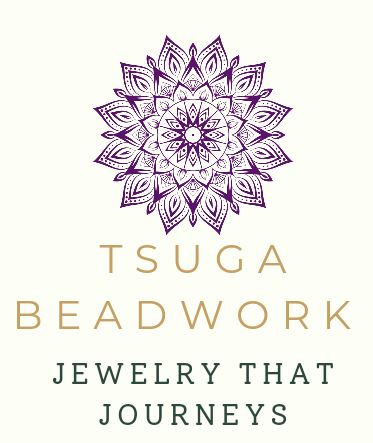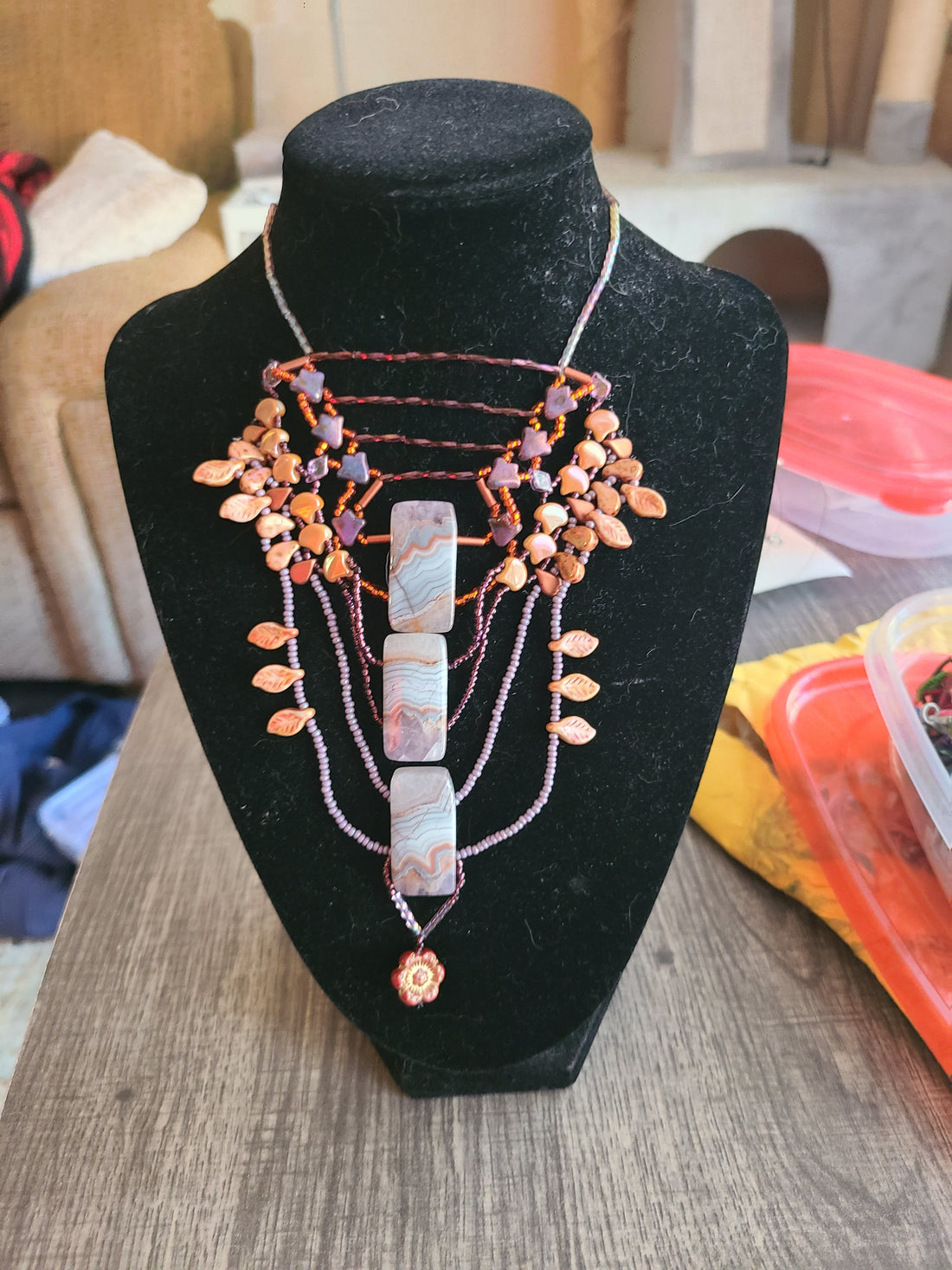When beads don’t behave as planned, it can get interesting. I start by sketching a rough idea of what I want a piece to look like. In some cases, it ends up looking exactly like what I had in mind. In other cases, it ends up completely different from my vision.
Pardon my chicken scratch sketches, but they made sense in my head, and came together as these fun tiered earrings. I like how the central circle portion is almost reminiscent of a ship's wheel!
This was a classic piece where everything worked as planned, the Trade Winds earrings. Save for a brief kerfuffle where I had a single defective bead in my working box, it all came together as planned. Score! The whole Aniconic collection seemed to go as planned, where all pieces came together swimmingly. Each piece seemed to come together pretty smoothly based on my sketches.
Right now, I’m working on a new collection, Zarmina, with Mughal and Turkmen inspirations. I had one piece where my original vision was promptly squashed by physics and improper geometry, for lack of a better word. I had seen some striking Mughal jewelry in some museum photos. I started sketching how I might reimagine it with beads- rather than a replica, something entirely different.

I LOVE working with lapis, and have some fun, bold lapis pieces This piece came toether nicely, with detaileed beadwork surrounding the lapis stones.
I had an idea in my mind, and I tried to make it happen. Alas, the physics and geometry caused the piece to fold in on itself. Rather than anchoring the piece and ensuring that it sat properly, the beadwork sagged in weird directions. Ack- back to the drawing board. I sketched out a couple more variants with my chicken scratch. After a little more percolation, I got this result, and I was thrilled with it. Took about 4 hours once I finally knew what I was doing, but it was worth it. I love the regal look of this form, with the mix of blue and gold tones. I’ve also made a version with rainbow amethyst. I have another one coming up with black labradorite.


Those are the two extremes when it comes to sketch to showstoppers. Thankfully, in many cases, I need not scrap the whole piece and start from scratch. A primary example is with the Stonecrossing bracelet. I had a design idea in my head, featuring interlocking circles of beads framing double-drilled gemstone beads. Surrounding those circles of beadwork, I envisioned triangles, creating a striking zigzag edge. Unfortunately, physics had other plans, and the zigzag layer flared out, perpendicular to the wrist, causing a goofy spiky effect. After a little contemplation, I realized something- all I needed to do was add a strand of beads at the top of each triangle. Voila! It all laid flush with the wrist, and the Stonecrossing bracelet was born. This one remains a favorite, with the bold geometric designs resulting from the zigzag shape.
I love this unakite Stonecrossing bracelet, with the contrast of orange and green tones with deep burgundy. Unakite always makes me think of the Appalachian range, and this color scheme was inspired by Appalachian fall color.
Every piece is different in terms of geometry. Not all beads are identical in proportion. I’ve had pieces where there’s a mismatch in the number of beads in each layer of a cuff, leading to a ballooning effect (where the middle is loose and the edge strands are tight. Sometimes, I get a flaring effect, where the middle strand is tight and the other strands are loose. I have to do a little bit of tinkering to figure out the number of beads to get the bracelet to sit flat. Sometimes I have to do the math, where 2 more millimeters per strand segment can add up to another centimeter or more, leading to an odd shape to the piece. But all in all, there’s a fair bit of math involved with making a Tsuga piece.

A couple of bracelets in this group did not behave as I had planned. The big green one flared out weird, and the top 2 infolded on themselves. Thankfully, I have since learned about the importance of geometry. Specifically, I experiment with the number of beads in each strand segment to ensure that a piece sits properly, without any unnatural pulling or pushing.
This confirms what my 4th grade teacher once said. “If you stop taking math classes, you’ll hear some doors closing.” That was in reference to how career opportunities narrow drastically without some math skills. And jewelry making, believe it or not, is one of those pursuits that requires math. But it’s so satisfying when you get the math right!
Detailed beadwork and unique designs require a little bit of contemplation and experimentation. In some cases, a piece needs to percolate in my bead tray for a bit as I reconfigure the design. But the end results always spark joy for me!
Hope your jewelry sparks joy for you! Tell me- what jewelry pieces spark joy for you?
All the best,
Grace



